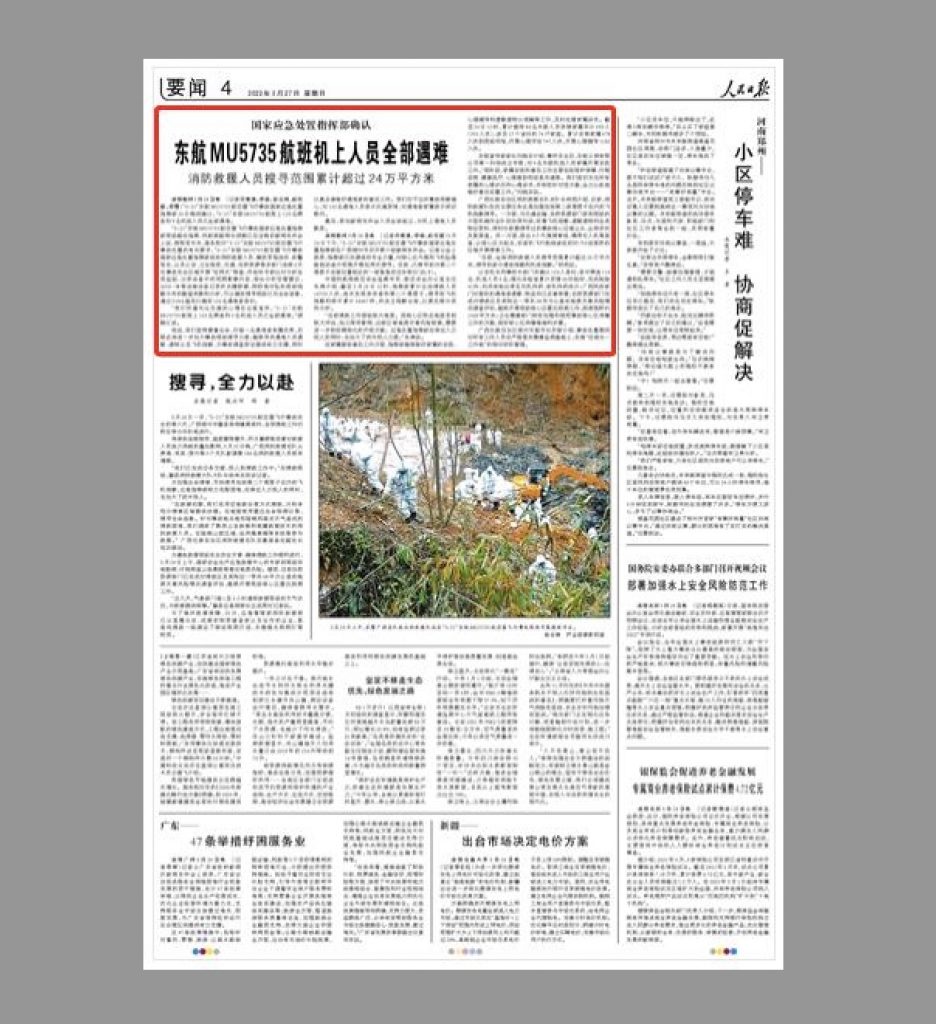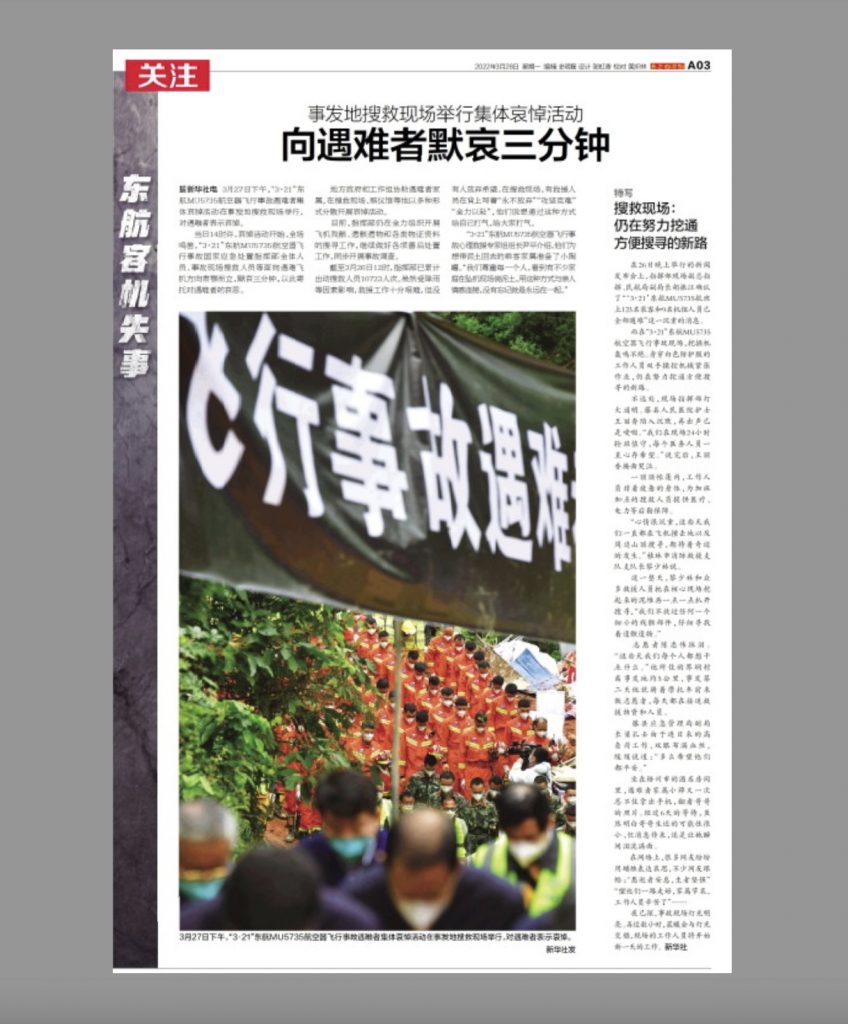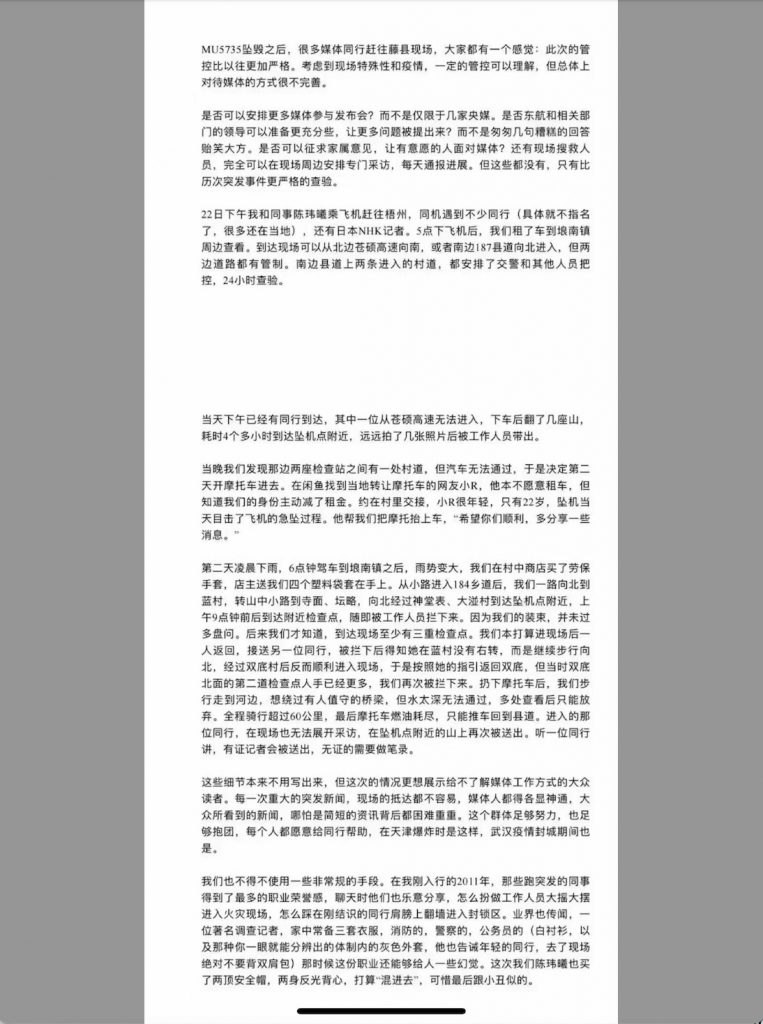Tracking Control
Moving on from Tragedy
On Friday last week, the Chinese government officially confirmed that all passengers and crew on board China Eastern Airlines flight MU5735 perished in the March 21 crash near the city of Wuzhou while en route from Kunming to Guangzhou. The victims included 123 passengers and 9 crew members. The government’s announcement was included on page four of the CCP’s official People’s Daily newspaper the next day, March 27.

Sunday, March 28, marked day 7 since the crash, generally an important day in Chinese culture for marking tragedies and remembering the victims. In anticipation, a ceremony was held at the crash site on Saturday, all of the rescue and response team members present observing three minutes of silence for those who perished.
The ceremony was covered by media across China, appearing in nearly all national and regional newspapers on Sunday.

As CMP explained in coverage of the media treatment of the tragedy last week, Party-state media have dominated the MU5735 story. It was no surprise that news of the Saturday ceremony came only from the official Xinhua News Agency, as the case for the above story published in Guangzhou’s Southern Metropolis Daily, and other official sources.
Journalists for non-official media did attempt to reach the scene of the crash on March 22, hoping to report the story over the past week. But access to the area was reportedly tightly controlled. According to one account posted to social media by journalist Du Qiang, the feeling among journalists was that “this time controls were far stricter than in the past.”
Can’t it be arranged for more media to take part in press conferences? And things not just be limited to central media? Can’t China Eastern and relevant government departments prepare a bit more fully, and allow more questions to be asked?

Now that fully eight days have passed, the authorities are pushing for everyone to move on from the tragedy – and from related stories and speculation. At this point, according to general practice, media will be discouraged from any further reporting on the crash, possibly through propaganda department directives.
During the first 7 days of a tragedy, the official line is typically that it is too early to “reflect back.” Personal and human stories are too painful and disrespectful while all energy should be on recovery and rescue. Once 7 days have passed, the perspective shifts. It is suddenly time for everyone to move on – because revisiting tragedy, or obsessing about its details, is too painful.
Xi Jinping’s tribute on Monday to the victims will likely be the last word before the results of the official investigation are released weeks or months from now.
Rounding Up the Rumormongers
But for the Cyberspace Administration of China (CAC), the country’s chief internet monitoring and control body, the important work now begins of going after those who spread “rumors” online in the midst of the search and rescue effort.
The CAC announced yesterday that it was in the process of tracing online rumors spread in the past 7 days in order to determine their source and hold those responsible to account. The office said it was working with websites and major internet and social media platforms to ferret out those who had shared “illegal information,” spread rumors and shared “conspiracy theories” about the MU5735 crash.
So far, the CAC reported, more than 279,000 pieces of “illegal and irregular information” had been cleared from the internet, including “more than 167,000 pieces of rumor-based information.” In addition, 2,713 user accounts had been removed and 1,295 discussion topics “dissolved” (解散).
The CAC separately released a list of 7 online rumors about the MU5735 tragedy, saying that the majority of these had come from personal online accounts, but that there was also involvement by “regular forces,” or zhengguijun (正规军), a reference in this case to official media such as Taiyuan Broadcast TV (太原广播电视台), which is named by the CAC as the source of one rumor about a passenger who did not board the plane.





















